| Umělec 2001/2 >> Scott`s Film Column | Просмотр всех номеров | ||||||||||||
|
|||||||||||||
Scott`s Film ColumnUmělec 2001/201.02.2001 Scott MacMillan | news | en cs |
|||||||||||||
|
"It may seem fitting that a major American studio, New Line Cinema, has decided to shoot a vampire film, Blade 2: Bloodlust, the sequel to 1998’s Blade, in Prague. The cult of the mystical and mysterious in Prague has always drawn tourists, and continues to do so. Yet the Hollywood-based producers of Blade 2 are cashing in on an altogether different mystique. This new cinematic aesthetic eschews the typical cliches of “magic Prague” yet remains firmly rooted in a sense of gothic macabre.
In Prague in Black and Gold, an informed biography of the city, author Peter Demetz traces the cult of mystic Prague back to an early wave of 19th-century international tourists. Later, local leftist dissidents in the 1960s revived this narrative, aided by the city’s majestic spires, the Prague Golem, the alchemists, and a hugely simplified Kafka. Demetz says this caricature, though useful 30 years ago as a reaction against stifling socialist realism, draws an inaccurate picture of his native city. “The new left myth of magic Prague was more productive within the neo-Stalinist regime than after its demise. Before 1989 it helped to undermine an official construction of life and literature, but in the new parliamentary democracy it runs the danger of prolonging yesterday’s protest (long turned into a tourist commodity) into a kind of romantic anticapitalism.” Remarkably, the makers of Blade 2 seem vaguely aware of this sentiment, and have chosen to avoid the trite trappings of the gothic... To understand why the producers have decided to bring this film to Prague — and, far more importantly, to set the film in Prague — requires a short diversion into the history of the vampire genre. A vampire chronology could fill up a book, ranging from the Transylvanian origins of the myth of Vlad Dracul to Bram Stoker’s 1897 classic to the fiction of Anne Rice in the 1980s and 1990s. As for film, there have been over 500 vampire movies made. We shall therefore limit ourselves to a few key reference points: In 1958, British film studio Hammer Films released The Horror of Dracula, directed by Terence Fisher. Marking the start of Hammer’s dominance of the horror industry, Christopher Lee’s potrayal of the Count shifted the figure away from the suave and debonair gentleman cursed by immortality and a hankering for necks — a standard set by Bela Lugosi in Universal’s 1931 Dracula. Lee’s Dracula was gritty, realistic — and bloody. Although Blade’s longevity remains to be seen — it was originally conceived by screenwriter David Goyer as the first part of a trilogy, and he’s already talking about a Blade 3 ending with the death of the protagonist — it may turn out to mark a major break from the vampire model of writer Anne Rice, who has cornered the market in vampire fiction in recent years with tales of tormented immortality. The world of Blade is an underworld where “suckheads” are a powerful Illuminati-like cabal that have lived among the humans, largely unde-tected, for centuries; their arch-enemy, Blade, played by Wesley Snipes, is half-vampire himself, requiring painful serum injections to overcome his blood thirst. Cut away the fictive trappings, though, and you basically have an outrageously trashy action flick. On a recent visit to the set at the empty ČKD factories in the Prague suburb of Vysočany, Goyers described the first Blade as “a movie that’s just about kicking ass… That’s what we wanted. We just wanted a movie that was really brutal, and just went for it… And we have the bloodiest scene in movie history.” What was more interesting about Blade than its cinematic quality was the way in which it crossed genres. The Blade concept began with an obscure Afro-fitted Marvel Comics character from the 1970s, a take-off on the Blaxploitation craze of the time — a black vampire hunter with a ‘fro, a long leather jacket and an array of comic-book interjections such as “‘Holy Christmas!” Said Goyer, “I always jokingly referred to him as Shaft with a stake.” Goyer took additional liberties with the character. “Vampires, pun intended, have become kind of long in the tooth,” he said. “The whole gothic, baroque thing had been done to death.” Instead, Goyer created a version of vampirism that relished its immortality. “I thought, ‘Wait, you live forever, you become a predator, you can’t get AIDS, you’re super-powerful, what’s the problem?’ I decided most vampires would be into it.” The movie was produced as an action film with obvious odes to the Hong Kong school of action directing, which was only just beginning to influence Hollywood films at the time. (This was only 1998, after all, before The Matrix.) Enter Guillermo del Toro, an upstart Mexican director seen as the creator of a new Latin horror sensibility. Del Toro did not direct the first Blade, but was brought in to give the sequel an actual horror flavor, rather than rehashing the straight action genre. While his 1993 debut Cronos was winning accolades for its creepy amalgam of bugs and Catholicism, del Toro’s only other big-budget Hollywood movie, Mimic, was a commercial flop. But peers in the industry note how del Toro took a trite premise — giant bugs take over a New York City subway station and kidnap Mira Sorvino — and performed impressive cinematic stunts, including a skillful use of darkness in the frame. The true genre of Blade 2, says del Toro, and his own forte, is not Blaxploitation-action-horror, but rather something he calls “techno-gothic.” Shooting in Prague, he says, “is too nice, because I find myself tempted all the time to go and shoot the touristic side of Prague. But we’re not, we’re actually going for the Prague that is basically the shell of once-industrial heavy industry. So we’re going for warehouses and sewers, abandoned hotels, things like that.” He takes his inspiration, he says, from gothic architecture. “One of the fundamentals of gothic architecture is the play between darkness and light, which is essentially also a moral statement that was very frequent in the churches. Most of the gothic cathedrals and so forth were indeed stone books, so to say. They would talk about sin within the carvings of the stone. And the idea for me is to take this almost moral light and shadow play within that architecture and transpose it to the industrial modern days.” Del Toro says: “Here is where my work and the mason’s work is the same. The masons that actually executed the stonework seem to have a huge sympathy for the devil. And they filled those little things with lusty images of sin, or gargoyles, or little monsters that stared laughingly at you from a corner. In the middle of all this absolutely crazy imagery you found a lot of really ambiguous sympathy for the devil. And I think that’s the same thing I try to do.” Perhaps this is a genuine shift in the vampire chronology that takes account of biological advances, and contemporary urban mailaise such as drug addition and AIDS, and perhaps it’s a change in the way global culture sees the city of Prague. Or a confluence of the two. In any case, the director’s vision embraces two unmistakable pop culture statements, injecting themes of urban blight and biological decay into the ever-evolving vampire myth. It is also a change in how the Czech capital is portrayed: away from gothic mysticism and nostalgia toward a city of “techno-gothic” urban spaces and images. Scott MacMillan can be reached at scott@ok.cz "
01.02.2001
Рекомендуемые статьи
|
|||||||||||||
|
04.02.2020 10:17
Letošní 50. ročník Art Basel přilákal celkem 93 000 návštěvníků a sběratelů z 80 zemí světa. 290 prémiových galerií představilo umělecká díla od počátku 20. století až po současnost. Hlavní sektor přehlídky, tradičně v prvním patře výstavního prostoru, představil 232 předních galerií z celého světa nabízející umění nejvyšší kvality. Veletrh ukázal vzestupný trend prodeje prostřednictvím galerií jak soukromým sbírkám, tak i institucím. Kromě hlavního veletrhu stály za návštěvu i ty přidružené: Volta, Liste a Photo Basel, k tomu doprovodné programy a výstavy v místních institucích, které kvalitou daleko přesahují hranice města tj. Kunsthalle Basel, Kunstmuseum, Tinguely muzeum nebo Fondation Beyeler.
|












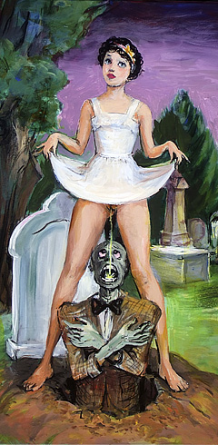






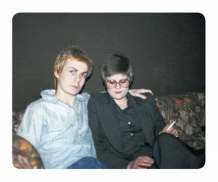




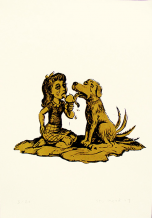
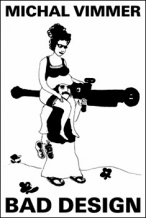

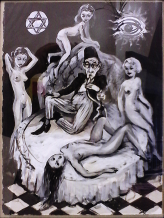


 New book by I.M.Jirous in English at our online bookshop.
New book by I.M.Jirous in English at our online bookshop.
Комментарии
Статья не была прокомментированаДобавить новый комментарий